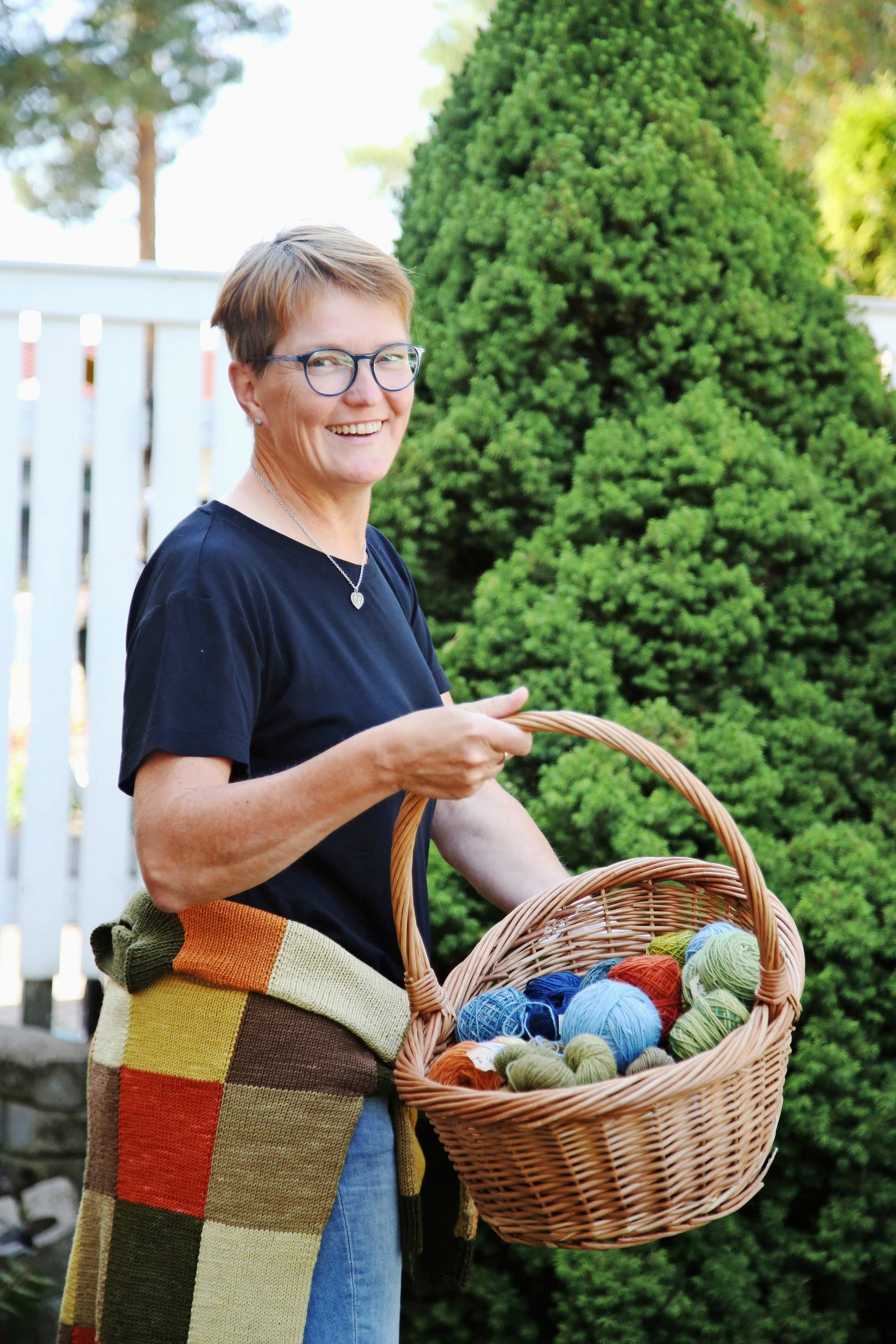
Annika’s home-dyed yarn: “Some of my yarns are so appealing that I don’t dare use them”
Enthusiastic knitter Annika dyes her wool yarns with mushrooms and plants. Dyeing is experimental by nature. “I toss the yarn into the pot, and it can come out vibrant or faint. If nothing else, it’s that pale color of granny underwear.”
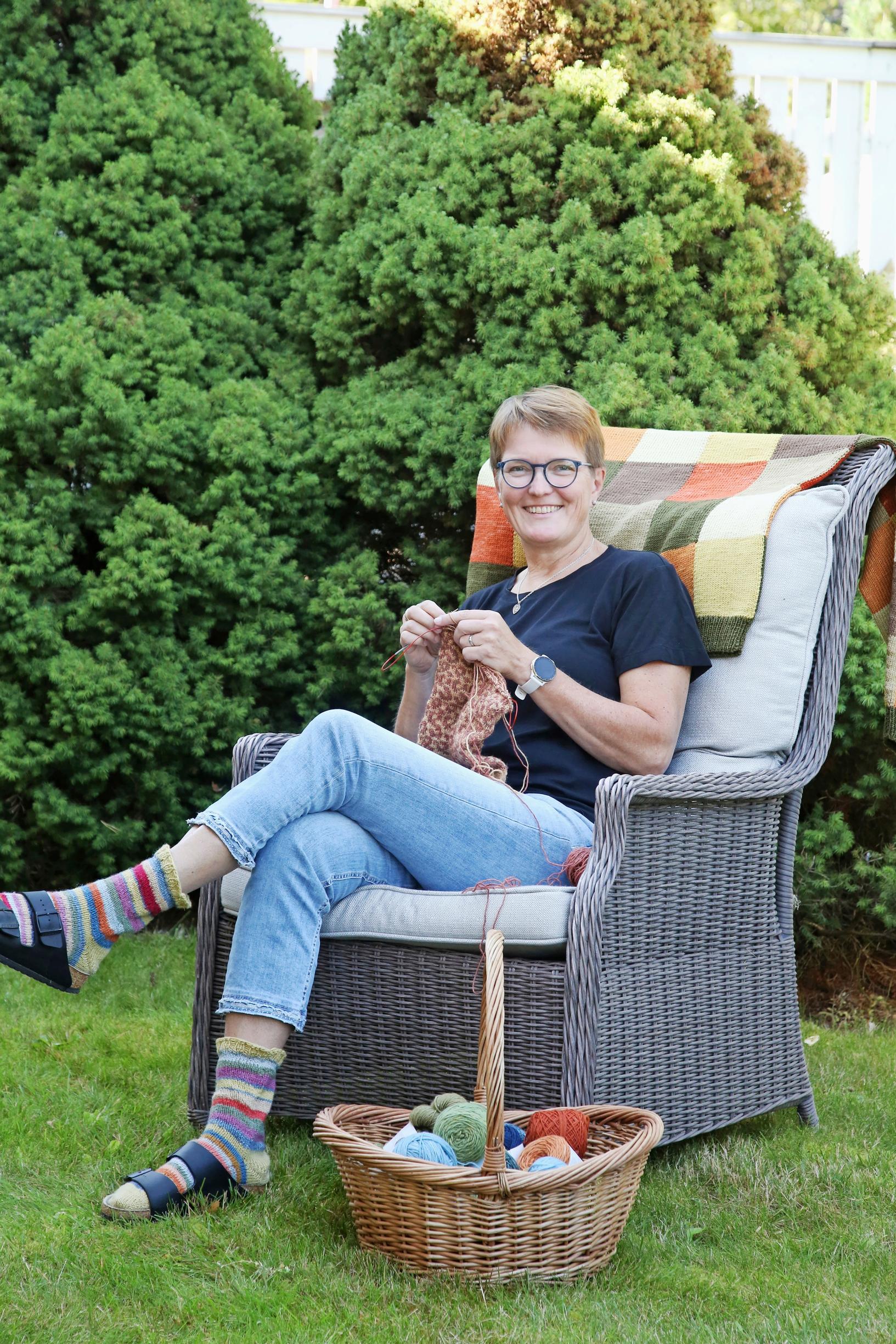
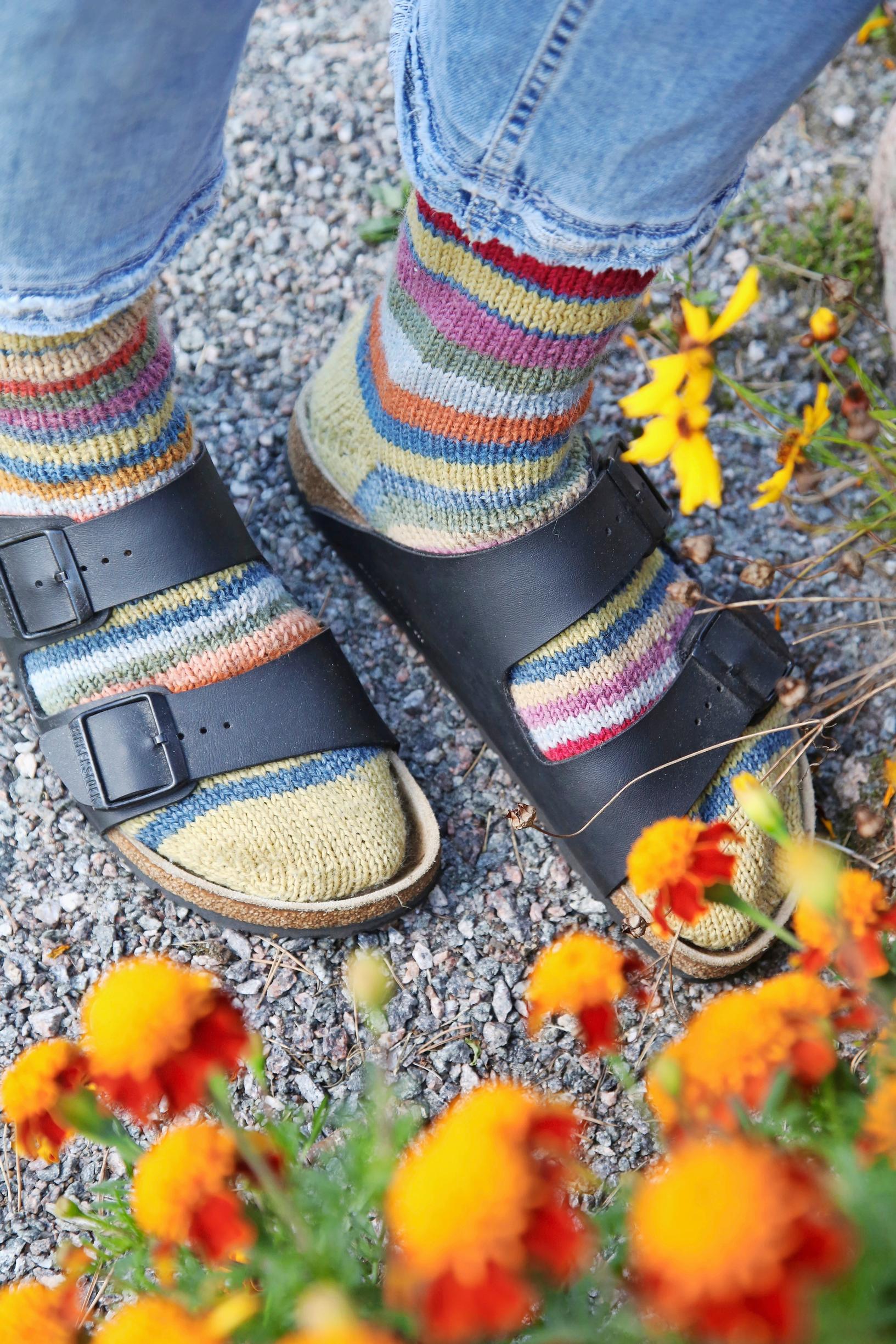
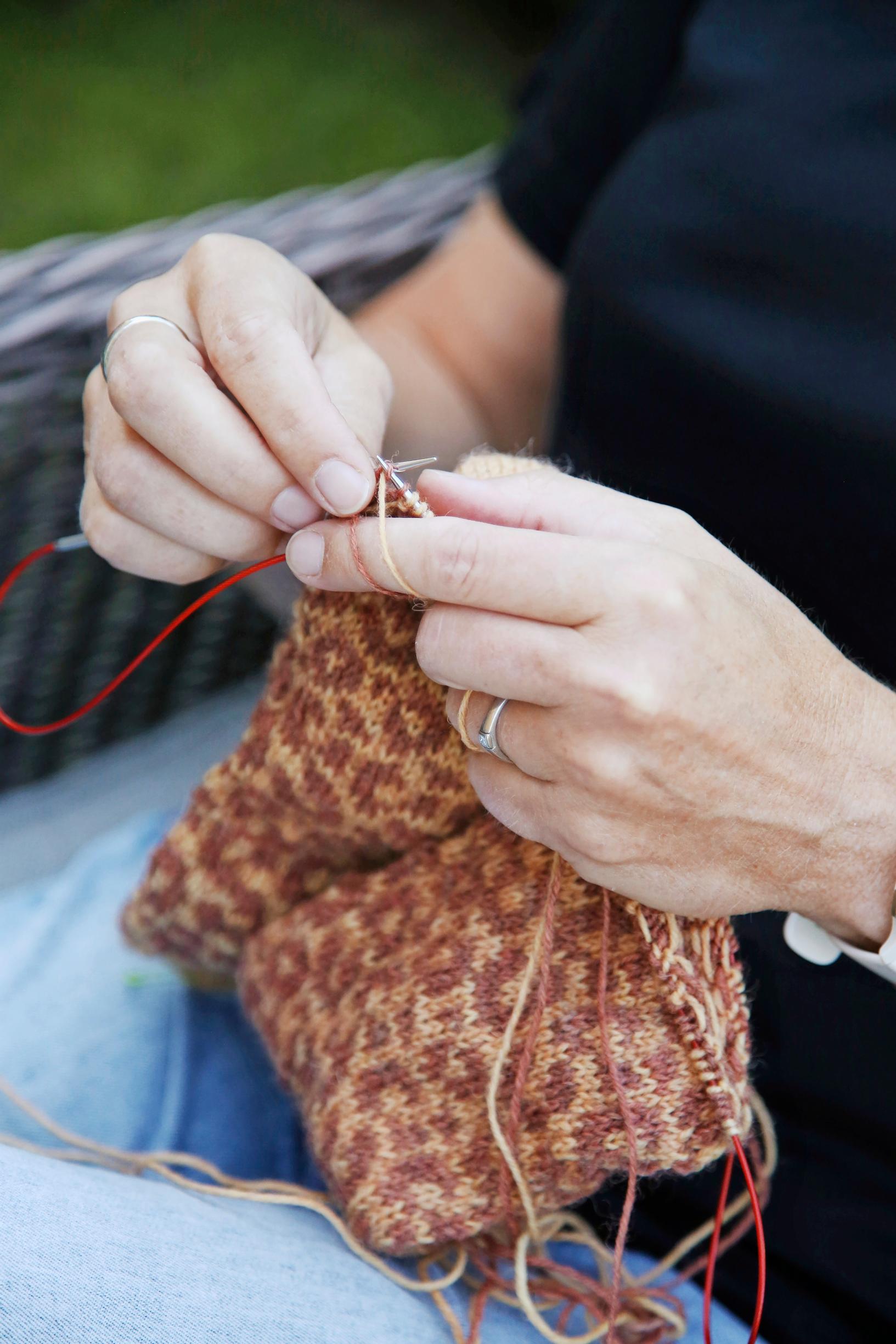
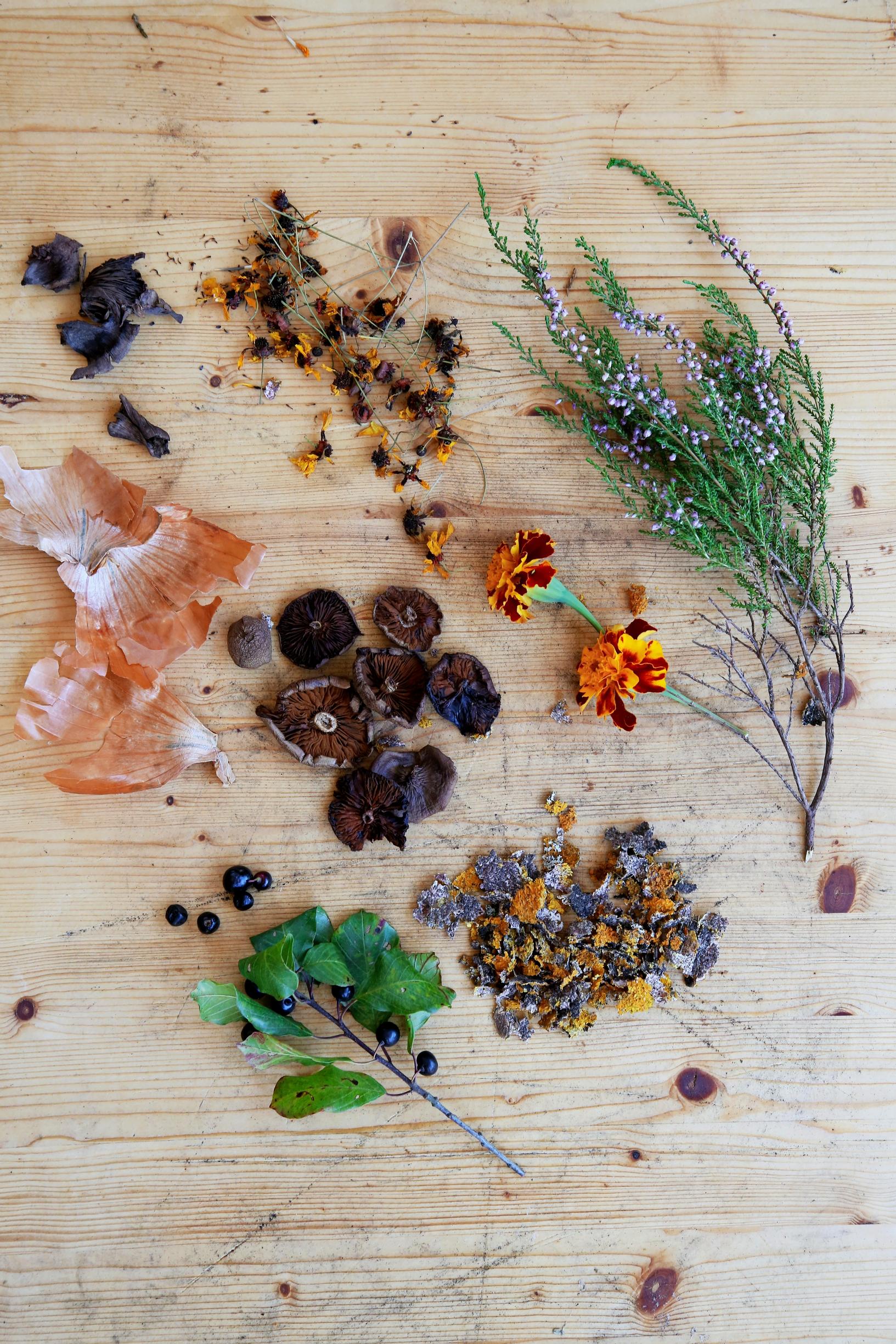
Annika’s dye pot simmers multiple times each summer. She dyes yarn she collects from plants and mushrooms at her home in Espoo and at her summer cottage in North Savo. More than a decade ago, she attended a Finnish Dyers’ Guild event, where she conjured nearly every color of the rainbow onto her yarn—and was instantly hooked.
Annika, what do you make from your dyed yarns?
I knit all sorts of things with them. In our family, wool socks are especially in demand. Whenever I have a new pair on my needles, my husband and two sons line up to see who they’re for. My other projects—like sweaters and shawls—get put to use immediately, too.
Some of the yarn I dye is so tempting I keep it in a basket on the living room table. I twist it in my hands, unable to bring myself to use it.
Dried mushrooms may look like dull brown lumps, but they can produce stunning colors and shades.
What has dyeing as a hobby taught you?
I’m generally quick and organized, but dyeing is peaceful and teaches me to slow down. It also lets me unleash my artistic side.
For a city dweller like me, gathering plants has been both eye-opening and educational. I roam nature, examine roadsides, and learn which plants have the best dye properties.
Tansy is a common, highly convenient dye plant. I knew nothing about seitikki mushrooms before I started this hobby, but they—and plenty of other fungi—have proven to be great sources of color.
The calendar and the cycle of the seasons guide this hobby. Some plants can be used for dyeing as early as spring, while others work better later or at a specific growth stage.
Do you have any favorite ingredients?
Mushrooms yield especially vibrant colors. Dried mushrooms may look dull and brown, but they can produce stunning colors and shades.
I especially love Cortinarius mushrooms. Cortinarius semisanguineus gives yarn an orange hue. Cortinarius sanguineus produces a lovely deep red, though it’s harder to find. I dry mushroom caps and stems in the fall so I can dye with mushrooms whenever I like.
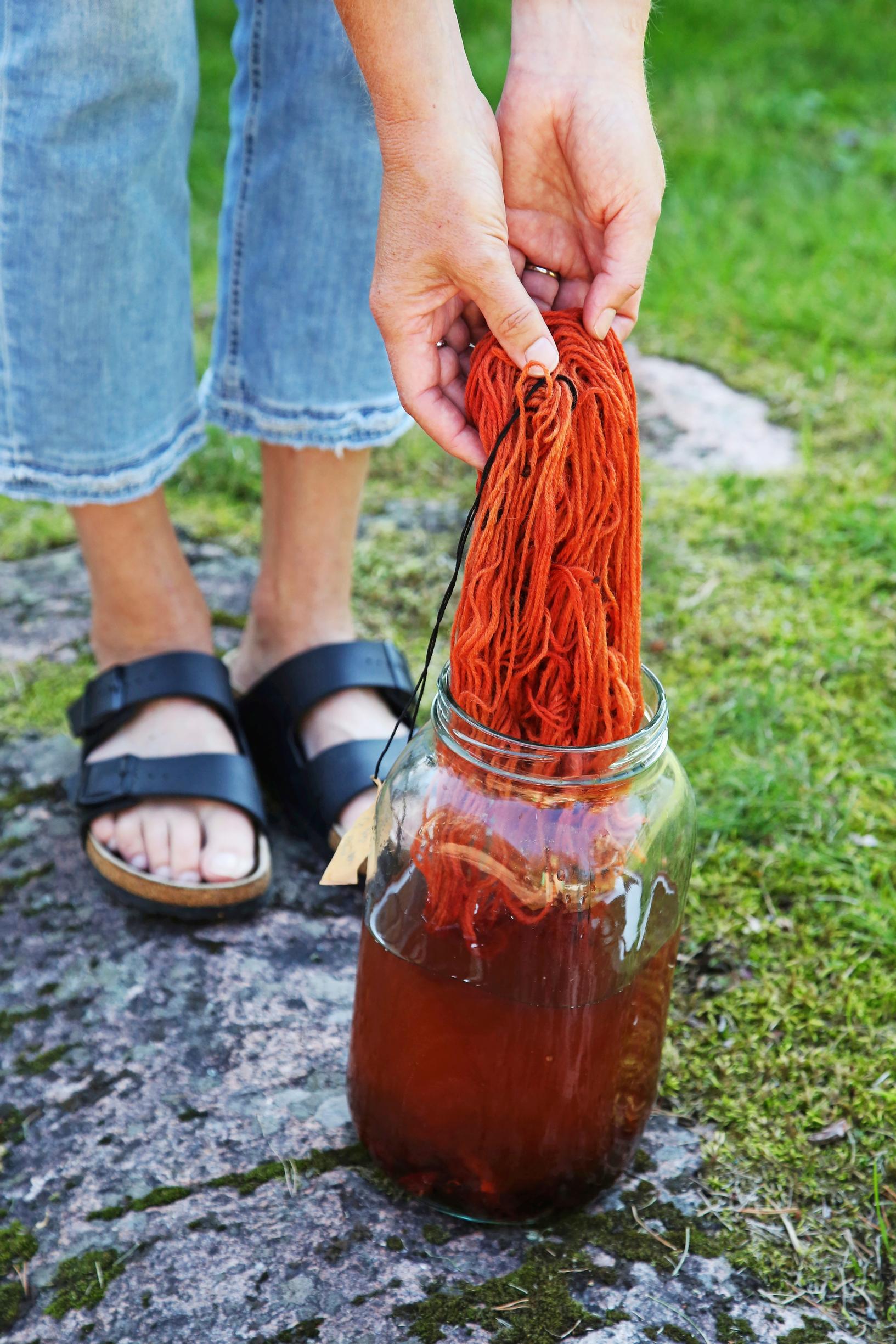
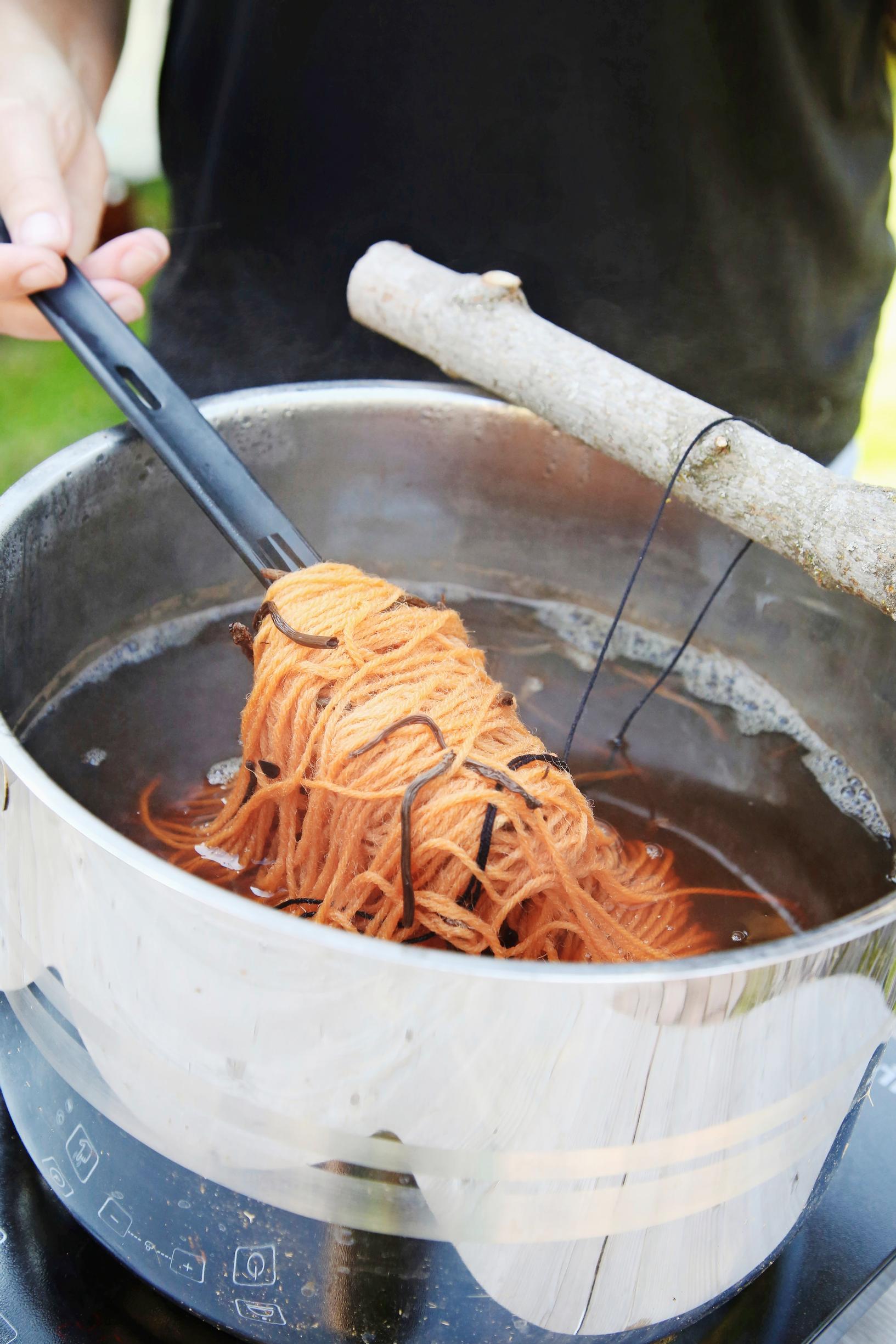
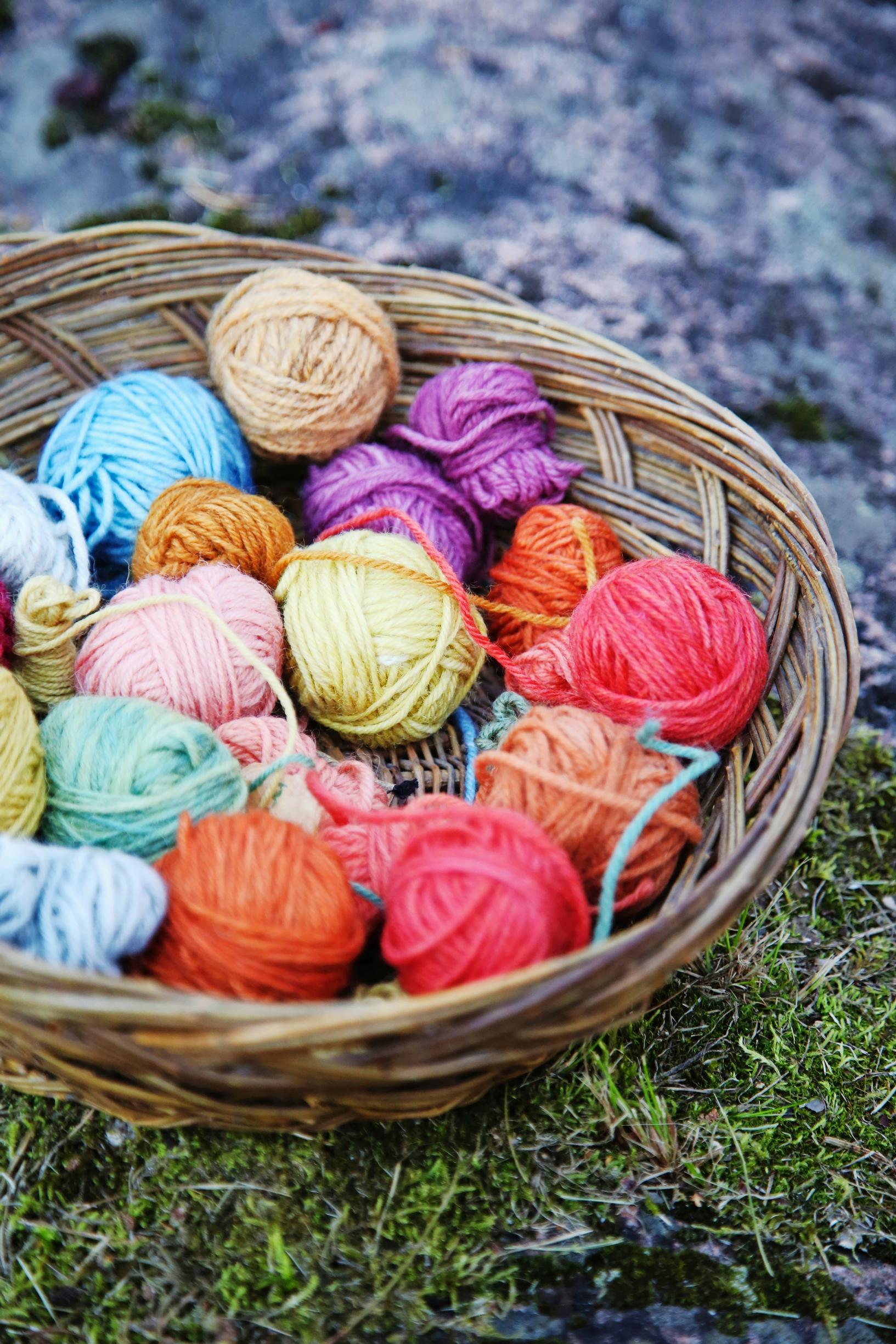
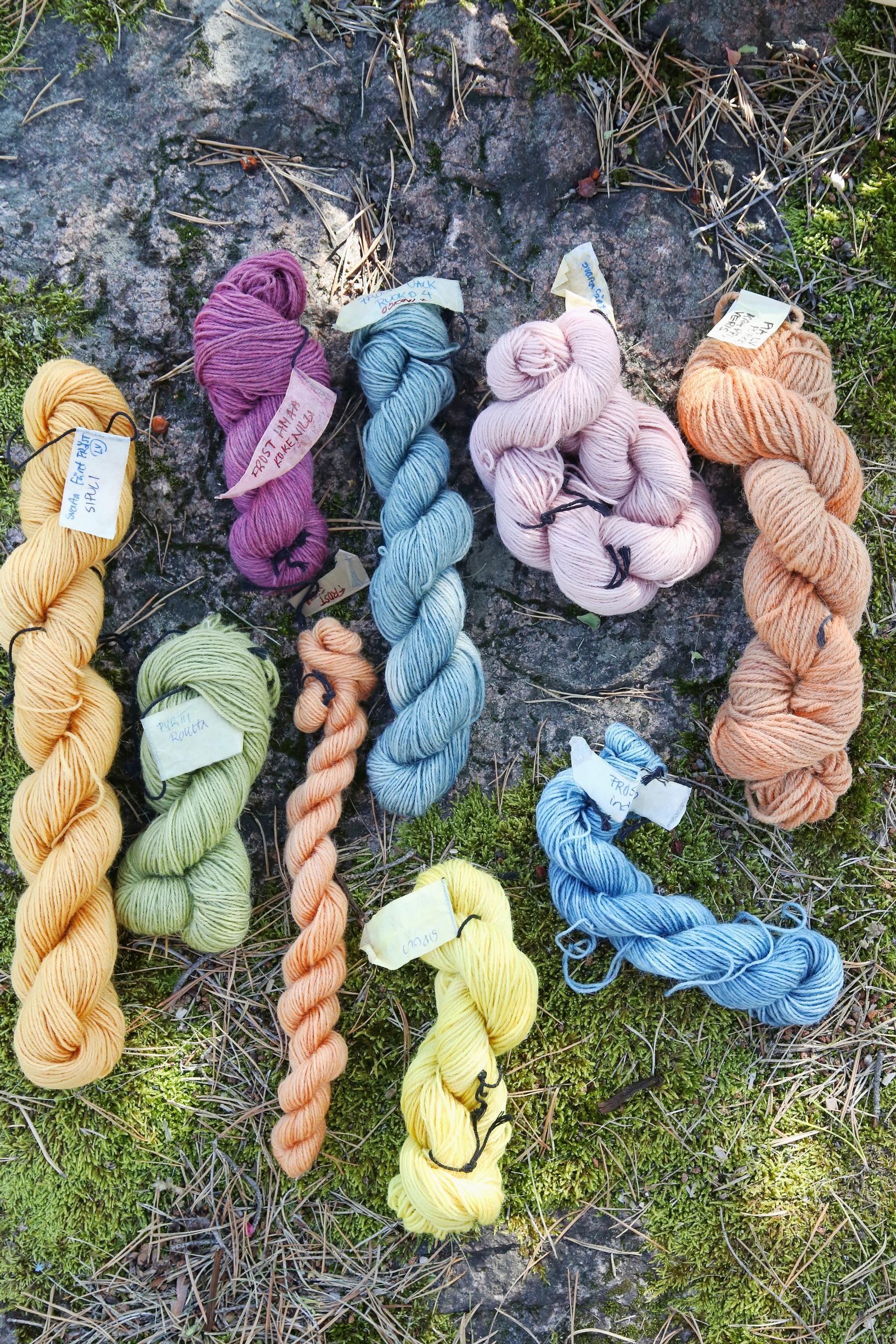
Have you had any mishaps while dyeing?
A couple of years ago, I tried fermenting Sarcodon squamosus mushrooms in hopes of getting a blue hue. I placed them outside in a large bucket and kept them there until spring. My son complained that the whole hillside smelled rotten. The yarn didn’t turn blue; it ended up the same brown I would’ve gotten without fermenting.
All colors and shades fit together in a wonderfully harmonious way.
Does the color usually turn out the way you expect?
Dyeing is experimental: I toss the yarn into the pot, and it either ends up brilliant or faint. An adventurous spirit is essential in this hobby!
You always get some shade when using plant dyes. If nothing else, it’s that pale color of granny underwear. Red is pretty tricky, while many plants give yellowish-green.
It’s exciting to see what shade appears each time. That’s why it’s best not to decide on a specific color beforehand.
Even if you repeat the same dyeing process, the yarn can turn out differently each time. Many factors affect the outcome, including the water’s pH, the plants’ growing location, and the summer weather. Among fellow dyers, we even joke that the moon’s phase might matter.
It can be annoying to get a shade you don’t like, so I just dye the yarn again. As a last resort, dipping it in an indigo bath covers failed experiments with blue.
What makes natural colors so addictive?
All colors and shades somehow work beautifully together. Natural colors can be bright, yet they have a gentle softness to them. Once I got used to them, many commercially dyed yarns felt almost too intense.
You can also experiment freely with the yarn. Not every shade has to be strong—the fun often lies in creating lovely color combos or unevenly dyed yarn. If you dip the skein gradually, you get a gradient; if you dip each end in different dye pots, you get a two-tone skein.
This method uses raw materials efficiently, leaving little waste. I also love thinking about how our foremothers did the same thing over the centuries.
Annika’s tips for dyeing yarn
1. It’s hard to control the final result precisely. If you want the same color for several skeins, it’s best to put them all in the pot together.
2. Jar dyeing with onion skins and alum is an easy way to try natural dyeing. If you know Finnish, you can find the instructions on Taitoliitto’s website.
3. Follow Facebook pages where dye enthusiasts share experiences and advice, like the Finnish Luonnonvärjärit – Suomen Värjärikilta.


